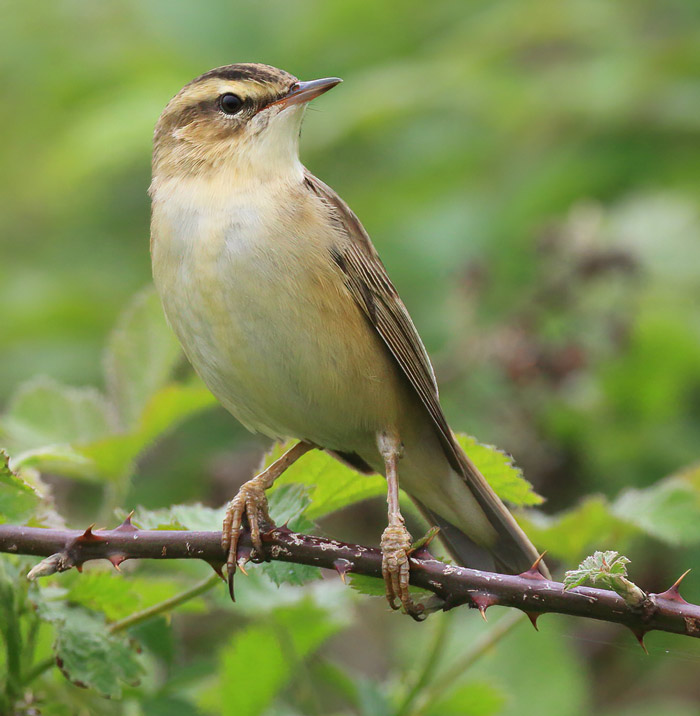The latest BTO/RSPB/JNCC Breeding Bird Survey (BBS) report shows encouraging news for Blackbirds in Northern Ireland, in contrast to declines elsewhere in the UK.
Collared Doves and Sedge Warblers are in trouble across the UK but especially in Northern Ireland, where their declines are greatest.
BBS is the main scheme for monitoring the population changes of the UK’s common and widespread breeding birds, producing population trends for 37 species in Northern Ireland.
Blackbirds are on the up in Northern Ireland but declining in Great Britain, reveals a major new report published today. The latest annual BTO/RSPB/JNCC Breeding Bird Survey Report shows that Blackbird numbers have increased by 19% in NI over the past 10 years, in contrast to a 7% decline in England and a 3% decline UK-wide over the same period.

Sedge Warbler, copyright Glyn Sellors, from the surfbirds galleries
Famous for their beautiful song, Blackbirds can often be found hunting for worms on lawns and in flower beds. Although more research will be required to understand the reasons for the success of these popular garden visitors in NI, scientists are concerned that Usutu virus – first recorded in in London in 2020 – may be playing a part in their decline elsewhere.
The picture is less rosy, however, for Collared Dove, another familiar bird of gardens in NI. Numbers of Collared Doves dropped by almost a quarter in NI between 2019 and 2021, while the new Report shows no recovery for the species in 2022. This 24% decline is slightly less steep than the 28% average losses across the UK, though both are cause for concern.
The Report also highlights declines in NI of a summer migrant that visits the UK to breed and spends the winter in sub-Saharan Africa. NI’s population of Sedge Warblers has dropped by more than half over the past decade, declining here at twice the rate it is in England and Scotland. Reasons for this 52% drop are unclear, but long-distance migrants are threatened by a wide range of factors including climate
change and habitat loss.
BBS produces population trends for 37 common and widespread species of bird in NI. The latest report reveals long-term (26-year) increases for 14 species and long-term decreases for 2 others.
Between 1995 and 2021, numbers of Blackcap in NI increased by 1,811%, driven in part by our changing climate and reflecting a boom in this tuneful warbler’s population across the UK. Greenfinch, down by 84%, shows the greatest decline. Last year’s BBS report highlighted the role of Trichomonosis, a parasite-borne infection, in the rapidly shrinking size of this once numerous species’ population nationwide.
Dr James Heywood, BBS National Organiser, said: “Of all the UK’s constituent nations, Northern Ireland is one of the hardest for volunteers to survey. The levels of access and physical geography, particularly in the west, make it very challenging indeed. The fact we are able to produce trends for as many species as we do is therefore a testament to the effort of volunteers right across Northern Ireland. One of the strengths of BBS is the fact that it can pick out these regional differences. Understanding why Blackbirds in Northern Ireland are bucking the overall English trend could be really valuable in being able to help reverse the trend across the Irish Sea.”
Anne-Marie McDevitt, Head of Species at RSPB NI says: “BBS is really crucial in enabling us to understand what’s happening with our most common birds and we are hugely grateful to all the volunteers that take part. We support BTO’s ambitions to get more volunteers involved in these surveys in NI, to increase coverage and help pick up trends in some of our rarer species such as farmland waders.”